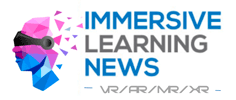Over the past decade, emerging technologies have been a captivating landscape of exciting advancements. We’ve witnessed the astonishing rise of augmented reality (AR) applications, capturing our imaginations and captivating audiences through groundbreaking experiences like the phenomenon that was Pokémon Go. Similarly, the Internet of Things (IoT) and its industrial counterpart, the Industrial Internet of Things (IIoT), have surged onto the scene, promising transformative capabilities and revolutionizing our connected world. These technological marvels have etched themselves into our collective consciousness alongside notable innovations such as 5G, cryptocurrencies, blockchain, and the ephemeral splendour of non-fungible tokens (NFTs).
However, amidst this ever-evolving technological tapestry, it is time to spotlight the emergence of a new prodigy: the Industrial Metaverse.
This is the inaugural instalment of a series that delves into the intricate realms of the Industrial Metaverse and the transformative capabilities of digital twin technologies. In this series, we will navigate through the uncharted territories of this technological epoch.
So, what is the Industrial Metaverse, and what untapped potential does it hold within its ethereal embrace?
There might be many „eye rolling“ and silent sighs while drawing parallels between the Industrial Metaverse and the recent antics of the colossal entity known as Meta (formerly Facebook). There was even an excellent comedy jab from the Icelandic tourist board, ‚Welcome to the Icelandverse‘.
In a realm where the buzz is ceaseless, and the contenders are plentiful, this article aims to introduce an underdog that has the potential to reshape the very fabric of industrial operations. The Industrial Metaverse beckons, with its fusion of virtual reality (VR), augmented reality (AR), mixed reality (MR), IIoT, and spatial computing technologies, to unveil a significant new frontier.
This prodigy represents far more than a fleeting appearance on the technological stage. It is a convergence of digital realms and physical realities, intertwining the virtual and the tangible to create an immersive, interactive, and collaborative tapestry. Like an architectural blueprint of the future, the Industrial Metaverse paints a vivid portrait of industrial landscapes, breathing life into the digital twins of our physical world.
Industrial Metaverse is entirely in its nascent form, predominantly associating it with just one state of technology like XR, or the consumer aspect is myopic. Its value goes beyond basic human entertainment or the commonly associated retail scope. It instead represents a massive opportunity and paradigm shift in industrial use cases. It is a combinatorial innovation space which ties together several technologies like extended reality (XR), Industrial Internet of Things (IIoT), 5G (6G already on the horizon), artificial intelligence (AI), non-fungible token (NFTs), and blockchain with a single digital thread.
Jon Radoff proposed a simplified framework to conceptualize the metaverse. It has seven layers that are deeply intertwined with each other.

Imagine for a moment the power of applying this visionary framework to unveil the very architecture of the Industrial Metaverse. Embracing this perspective allows us to grasp the intricate interplay of technologies, systems, and processes that converge within the Industrial Metaverse.

Industrial Metaverse heralds the advent of Industry 5.0, weaving a seamless tapestry that interconnects foundational technologies and processes prevalent across diverse industrial verticals. Within its embrace, a profound transformation takes root, magnifying the visualization of processes, supply chains, and logistics. It further engenders a convergence of real-time information technology (IT) and operational technology (OT) within the virtual realm. The result is a paradigm shift in engaging with this digital ecosystem, fostering a heightened sense of tactility and instantaneous feedback.
Brace yourself, for the Industrial Metaverse beckons, forging a new era of interconnectedness and innovation.
Quelle:


